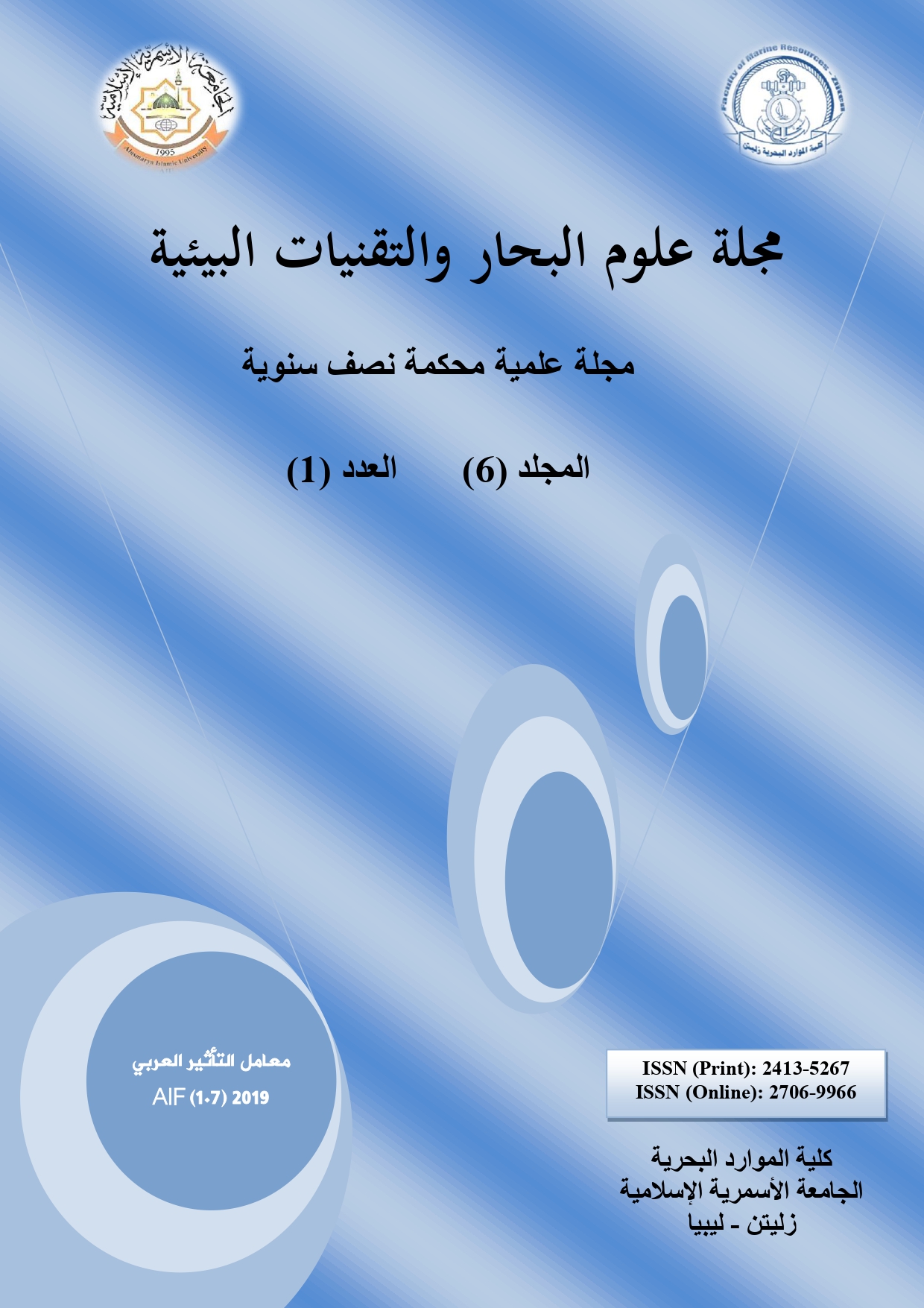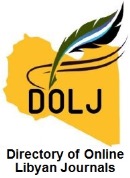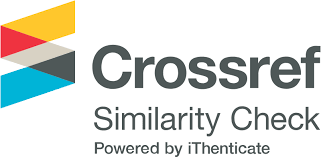قياس تطور بعض المؤشرات الاقتصادية المتعلقة بالموارد السمكية في ليبيا
DOI:
https://doi.org/10.59743/jmset.v6i1.50الكلمات المفتاحية:
إنتاج، استهلاك، صادرات، واردات، فترات التغطية، موارد سمكية، ليبياالملخص
تعتبر تنمية الانتاج السمكي أحد المحاور الأساسية للتنمية الزراعية اللازمة لمواجهة تزايد الفجوة الغذائية وعلى الرغم من توافر موارد اقتصادية وطبيعية مهمة في ليبيا إلا أن الطاقة الإنتاجية لا تتناسب مع تلك الموارد، مما أدى إلى عدم الوفاء باحتياجات الاستهلاك المحلي وانخفاض نسبة الاكتفاء الذاتي رغم أن عدد السكان في ليبيا لا يتجاوز الـــــ6 مليون نسمة. استهدفت الدراسة تحليل الاتجاه العام لتطور بعض المؤشرات الاقتصادية المتعلقة بإنتاج واستهلاك الأسماك بالإضافة إلى الواردات والصادرات السمكية وقياس الفجوة الغذائية والاكتفاء الذاتي، ايضا تحديد فترات كفاية الانتاج وتغطية الواردات للاستهلاك المحلي بالاعتماد على سلسلة زمنية (1981-2013) مقسمة إلى فترتين. بينت نتائج الدراسة أن هناك اتجاها عاما متزايدا في الإنتاج والاستهلاك خلال فترات الدراسة، ولكن الطاقة الانتاجية من الأسماك لا تكفي الاحتياجات السنوية حيث بلغ متوسط فترة كفاية الإنتاج للاستهلاك اليومي خلال مدة الدراسة 222 يوم ورغم أن معدلات الاكتفاء الذاتي تتزايد بشكل عام ولكنها لم تصل إلى الاكتفاء الكامل أو تحقيق فائض إلا في 3 سنوات فقط طول مدة الدراسة، كما أن متوسط فترة تغطية الواردات للاستهلاك المحلي لم تزد عن 108 يوم. اكتفت الدراسة الحالية بتقدير العلاقة بين الإنتاج كمتغير تابع (Y) والاستهلاك كمتغير مستقل (X)، قد ثبتت معنوية العلاقة في نموذج الانحدار البسيط وبلغ معامل التحديد 0.562 و0.633 و0.612 لإجمالي الفترة و الفترة الأولي والثانية على التوالي، بما يعكس استجابة الإنتاج بمعدل مقبول للتغير في حجم الاستهلاك، وأن الاستهلاك يفسر نسبة كبيرة من التغير في حجم الإنتاج، أما فيما يخص العوامل المحددة لاستهلاك الأسماك، افترض الباحثون استنادا إلى الفروض والدراسات السابقة ومدى توفر البيانات في هذا المجال، ثلاث متغيرات مستقلة متمثلة في الواردات والدخل وعدد السكان، وقد تم استخدامها في تقدير معادلات الانحدار المتعدد في صورها المختلفة الخطية واللوغاريتمية المزدوجة والقطع الناقص، وقد أظهرت المحاولات عدم وجود أي صورة منها قد مثلت العلاقة في صورتها المتعددة نظرا لوجود ارتباط قوي نوعا ما بين المتغيرات المستقلة الممثلة لعدد السكان والدخل الأمر الذي يؤدي إلى ظهور مشكلة الازدواج الخطي، وكذلك مشكلة الارتباط الذاتي. وقد تم محاولة معالجة المشاكل بمختلف الطرق وإعادة التقدير باستخدام طريقة stepwise حيث استبعدت جميع المتغيرات ماعدا المتغير الذي يمثل عدد السكان. بلغ معامل التحديد 0.709 و0.425 و0.298 لإجمالي الفترة والفترات الأولى والثانية على التوالي بما يعكس استجابة الاستهلاك بمعدل مقبول للتغير في عدد السكان لإجمالي الفترة، وأنه يفسر نسبة كبيرة من التغير في الاستهلاك، باعتباره عاملا مهما لزيادة الطلب على الأسماك في السوق المحلي.
التنزيلات
المراجع
قائمة المراجع باللغة العربية:
أبوعروشة، مسعودة عبد الرحيم (2015). إمكانيات وفرص الاستثمار في الزراعة السمكية في ليبيا. تقرير غير منشور مقدم للهيئة العامة للزراعة والثروة الحيوانية والبحرية، البيضاء، ليبيا.
أبوعروشة، مسعودة؛ الصلاي، عبد السلام (2017). دراسة استطلاعية لواقع الاستثمار في الزراعة السمكية على سواحل الجبل الأخضر في ليبيا. المؤتمر الأول للاقتصاد الزراعي، الجمعية الليبية للاقتصاديين الزراعية، جامعة عمر المختار 15-16، نوفمبر. البيضاء. ليبيا.
الاتحاد العربي لمنتجي الأسماك (2013). دليل منتجي الثروة السمكية في الوطن العربي، منشورات الأمانة العامة للاتحاد، بغداد، العراق.
الخمسي، محمد رجب (2008). الزراعة السمكية في ليبيا ودورها في زيادة الانتاج السمكي، ط الأولى، الهيئة الوطنية للبحث العلمي، طرابلس، ليبيا.
الزقوزي، سالم ونيس (2006). حالة المصائد والصيد البحري في ليبيا (2002-2004)، منشورات مركز بحوث الاحياء البحرية، تاجوراء، ليبيا.
الشقروني، محمد (1984). مشروع المزارع السمكية في ليبيا، تقرير غير منشور، هيئة الثروة البحرية، وزارة الاقتصاد، طرابلس، ليبيا.
القبلي، حسن (2004). التنوع في الزراعات المائية وآثره في نجاح الاستثمار. مجلة آفاق البحار، 3(7): 8-10.
القبلي، حسن (2005). من مزارع تربية الأحياء المائية (سمكة الشولة). مجلة آفاق البحار، 4(32): 8-10.
القبلي، حسن (2006). من مزارع تربية الأحياء البحرية (ثعبان البحر). مجلة آفاق البحار، 5(55): 8-10.
القعود، أحمد الهادي (2006). الزراعة المائية في ليبيا. ورشة عمل حول النظم المطورة لزيادة إنتاج المزارع السمكية، للفترة 10-12 سبتمبر. القاهرة، مصر.
المنظمة العربية للتنمية الزراعية (2010). الإحصاءات السمكية، المجلد (7)، الخرطوم السودان. متوفر على الرابط [http://www.aoad.org/Statistical_Fish%20book%20v4.pdf].
المنظمة العربية للتنمية الزراعية (2015). الإحصاءات السمكية، المجلد (9). الخرطوم، السودان. متوفر على الرابط [http://www.aoad.org/Fish_Book_Vol9.pdf].
المنظمة العربية للتنمية الزراعية (2016). الاستراتيجية العربية لتربية الأحياء المائية. اصدارات المنظمة، الخرطوم، السودان. متوفر على الرابط [http://www.aoad.org/FishStratgy.asp]
المنظمة العربية للتنمية الزراعية (2006). المؤشرات العامة لواقع الزراعة السمكية في الوطن العربي. ورشة عمل حول النظم المطورة لزيادة إنتاج المزارع السمكية للفترة 10-12 سبتمبر، القاهرة، مصر.
الهيئة العامة للثروة البحرية (2009). حالة المصائد البحرية والصيد والاستزراع السمكي في ليبيا. منشورات الهيئة العامة للثروة البحرية، طرابلس، ليبيا.
الهيئة العامة للتخطيط (2003). تقييم القطاعات الاقتصادية للفترة (1985-2002). التقرير السنوي، طرابلس، ليبيا.
حدود، ضو؛ النعاس، أيوب؛ المقصودي، محمد؛ وعبدالباري، رمضان (2005). تقرير الأماكن الرطبة والسبخات بالمنطقة الشرقية. دراسة مقدمة إلى اللجنة الشعبية لشعبية القبة إعداد الأوزون للدراسات البيئية.
حمد، فاطمة محمد (2007). دراسة اقتصادية للعوامل المؤثرة على إنتاج وتسويق واستهلاك الاسماك في الجماهيرية الليبية. رسالة ماجستير، مقدمة بقسم الاقتصاد الزراعي، كلية الزراعة، جامعة عمر المختار، ليبيا.
صندوق النقد العربي، الأمانة العامة لجامعة الدول العربية، الصندوق العربي للإنماء الاقتصادي والاجتماعي (2009). التقرير الاقتصادي العربي الموحد. منشورات صندوق النقد العربي، دبي، الإمارات العربية المتحدة.
صندوق النقد العربي، الامانة العامة لجامعة الدول العربية، الصندوق العربي للإنماء الاقتصادي والاجتماعي (2011). التقرير الاقتصادي العربي الموحد. منشورات صندوق النقد العربي، دبي، الإمارات العربية المتحدة.
صندوق النقد العربي، الامانة العامة لجامعة الدول العربية، الصندوق العربي للإنماء الاقتصادي والاجتماعي (2013). التقرير الاقتصادي العربي الموحد. منشورات صندوق النقد العربي، دبي، الإمارات العربية المتحدة.
لعيرج، عوض بالقاسم (2007). دراسة اقتصادية انتاج واستهلاك الأسماك في ليبيا. إطروحة دكتوراه، كلية الزراعة، جامعة الاسكندرية، مصر.
مركز البحوث الزراعية (2017). نشرة احصائية للواردات والصادرات الزراعية (2000-2010). فرع بحوث المنطقة الغربية، طرابلس، ليبيا.
قائمة المراجع باللغة الإنجليزية:
Abuarosha M. (2013). Drivers and Obstacles of Agriculture Development in Libya: case study: marine aquaculture. PhD thesis, Faculty of Management, Sheffield Hallam University, UK.
Allan J.A., and Mclachlan K.S. (1976). Agricultural development in Libya after oil. African Affairs, 75(300), 331-348.
FAO (2006). The State of World Fisheries and Aquaculture 2016. Contributing to food security and nutrition for all. FAO publication, Rome, Italy.
FAO (2016a). The State of World Fisheries and Aquaculture 2016. Contributing to food security and nutrition for all. FAO publication, Rome, Italy.
FAO (2016b). The State of Mediterranean and Black Sea Fisheries. General Fisheries Commission for the Mediterranean, Rome, Italy.
FAO, COPEMED, MBRC (2000). Artisanal Fisheries in Libya (Census of Fishing Vessels and Inventory of artisanal fishing, Rome, Italy.
Khalfallah, Myriam, Belhabib, Dyhia, Zeller, Dirk and, Pauly, Daniel (2015). Reconstruction of Marine Fisheries catches for Libya (1950-2010). Working paper Series (47). Fisheries Centre the University of British Columbia. BC, V6T 1Z4, Canada.
التنزيلات
منشور
إصدار
القسم
الرخصة
الحقوق الفكرية (c) 2020 مجلة علوم البحار والتقنيات البيئية

هذا العمل مرخص بموجب Creative Commons Attribution 4.0 International License.












